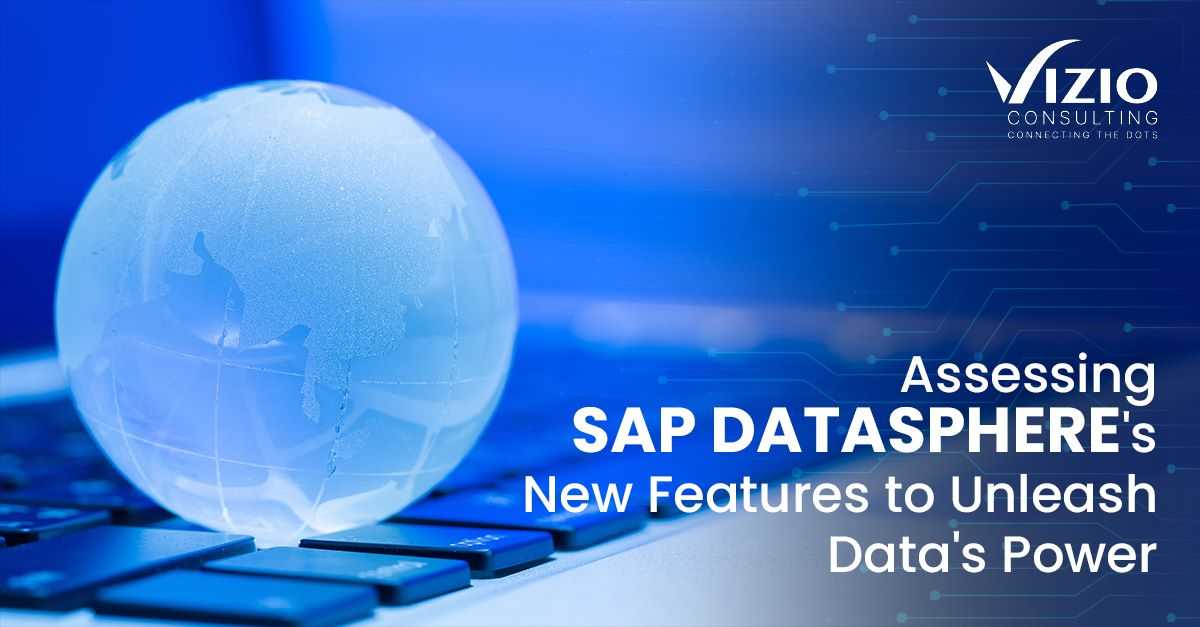Making meaning of data can be difficult in today’s hectic work environment. However, don’t be concerned; SAP has you covered with its most recent invention, SAP Datasphere. This technology integrates, catalogues, models, and virtualises data from various sources, including SAP and non-SAP systems, to simplify your life.
Why then wait? Let’s delve in and begin discovering SAP Datasphere’s complete potential!
Intriguing SAP Datasphere Capabilities
Let’s examine three fascinating features of SAP Datasphere in more detail and outline how they can help organisations release the potential of their data.
1. Application and Data Integration
Data integration can be complex, particularly when combining SAP and non-SAP data. However, you can easily combine data from both sources using SAP Datasphere.
No matter where the information is kept or how it was created, SAP Datasphere can assist you in reducing integration complexity and obtaining a combined picture of the data. This allows you to focus more on using your data to make strategic choices for your company and less time thinking about the technological elements of integration.
So why not start the exciting adventure by creating a Replication Flow right away? The first step is to establish a connection with the source server. Once completed, it will have greatly streamlined the data replication process and saved time and effort.
2. Analytical Models for Semantic Modeling
Is there a simple method to improve your data’s usability and usefulness for SAP Analytics Cloud consumption?
The solution is analytical models!
SAP Datasphere’s analytical models are the ideal remedy for that. It serves as the building block for preparing data for use in SAP Analytics Cloud. These models offer a multi-dimensional structure that lets you come up with insightful answers to various business issues.
An analytical dataset must be used as a basis when developing an analytical model. These databases, which include dimensions, texts, and groups, serve as the foundation for modelling. Measures, which naturally include amount or unit information, can be added to fields with the semantic types “Amount with Currency” and “Quantity with Unit.”
If one is familiar with analytical models and analytical databases, one can build a strong foundation for data analysis and make informed decisions.
3. Catalog
We’ve made incredible strides in the area of data analytics, and as a result, we can now successfully complete a number of challenging analytics jobs. But with SAP Datasphere, we can advance matters by utilising its enterprise-wide data catalog to guarantee proper control over a number of systems.
As the catalog enables us to handle and keep the metadata for the data assets used to create these models, it is especially crucial when developing analytical models. We can make sure that our thoughts are precise and reliable by classifying, labelling, and recording our data. As a result, utilising the SAP Datasphere catalog is not only a wise decision, but it is also an essential one.
The catalog allows us to fully utilise the insights that data analytics can offer by providing crucial context for the materials we produce.
The Catalog is a potent instrument that assembles an organised inventory of company metadata and data assets to provide an efficient data administration strategy. This makes it possible for business and technical users to fully utilise their company data. The catalog offers a complete solution to handle the data assets as a central location to find, categorize, comprehend, and prepare all the data in the company.
Using the database, one can develop reusable business models and identify the single source of truth for a particular data region. By using the inventory to determine which stories are impacted by their changes, one can streamline the procedure and guarantee data integrity.
Conclusion
All have been happy to have looked into the three cutting-edge features that this technology offers: Application and Data Integration, Semantic Modeling, and Data Cataloging and Quality.
To fully utilise data, these features can be developed and used in a business environment. Also, let us not forget that some of the features we discussed may alter or take on a different appearance in the future as SAP continues to develop and enhance its products.
Consequently, it is concluded that SAP Datasphere is an intriguing invention that can help businesses interpret their data. With its ability to combine, organize, analyze, and virtualize data from various sources, SAP Datasphere asserts that it will change the game.
The information in this article should have helped you gain a better grasp of these important components and how they can enable companies to utilise their data to its fullest potential.

